The tobacco, vaping and next-gen categories are no strangers to legislation, but it’s hard to remember a time when they have been more embattled than they are today.
In vaping, retailers are bracing for an outright ban in the sale of disposable vapes from April 2025, with just six months to sell through stock. The vape products that are left will face a tax per 100ml on nicotine strength from 2026.
Authorities have also been given new powers to issue a £100 on-the-spot fine to retailers who are breaching vaping display restrictions and merchandising them in sight of children.
It is tobacco, however, that faces some of the toughest restrictions yet. Children aged 15 or under in 2024 may never be allowed to buy tobacco legally if new legislation passes. The category will face further tax increases in 2026 to continue to hike prices higher.
This will only further beleaguer tobacco sales, which are already down -5.2% in value and -17.3% in volume year on year.
Retailers are feeling the impact. “Tobacco sales have dropped by two-thirds of what they were last year,” says Alan Mannings, owner of Shop on the Green in Chartham, Kent. “The future of the category is so uncertain.”
“Tobacco is on its way out,” agrees Faraz Iqbal, owner of Premier Linktown Local in Fife.
But is there more to it? Gemma Bateson, sales director at JTI, says: “The market remains a strong and profitable category for retailers. With existing adult smokers increasingly influenced by price, we have continued to innovate our value product offering, launching new products to meet demand and help retailers to drive sales.”
The category also remains a sector where independents can offer a comparable price to the supermarkets. Cigarettes are only 3.2% more expensive in symbols & independents and e-cigs are only 2.4% more expensive.
So, what does the future look like for the tobacco, vaping and next-gen category? Here we answer your questions and uncover the trends you need to tap into to offer a profitable range in the months and years ahead.

1. Will the generational tobacco ban increase illicit trade?
The generational tobacco ban is back. The Labour Government has reintroduced this as part of the Tobacco and Vapes Bill and the law would see the minimum age at which a person can be sold tobacco products – including cigarettes, cigars and heated tobacco – increase each year by one year, starting in 2027.
Therefore, anyone born on or after 1 January 2009 will never legally be allowed to be sold tobacco.
“Retailers have expressed concerns that this could result in increased violence against shop workers and lead to a rise in illicit trade. In fact, over two-thirds (67%) of retailers surveyed told us that they believe the generational tobacco ban would likely lead to an increase in illicit tobacco activity,”[3] says Ian Howell, public affairs manager at JTI. “Illicit trade is already rife across the UK, bringing criminals to our local communities and there is concern within the industry that illegal products will become more prevalent through this proposed ban.
“After months of engaging with retailers, we hear their call to increase the minimum legal age of purchase for tobacco to 21, as the only viable alternative to the generational smoking ban.
“The new Labour Government must listen to the voice of retailers, to create a workable and practical alternative to the generational smoking ban. Retailers can raise their concerns by contacting their new local MP.”

2. Where is the growth in the tobacco category?
Of the top 12 ready-made cigarette brands, only two have seen volume sales growth in the past 12 months and both are at the value end of the scale. Richmond and Chesterfield have grown by +5.7% and 19.9% respectively.
Value remains the dominant force in tobacco, with brands investing in this price point.
“Last year we repositioned Sovereign Blue to a competitive RRP in line with our other ultra-value options, such as Mayfair Silver,” says JTI’s marketing director Mark McGuinness. “Most recently, we expanded our ultra-value roll-your-own (RYO) range with the launch of Mayfair Gold RYO format in September. The launch builds on the success of Mayfair Gold ready-made cigarettes (RMC), which have achieved a retail sales value of £46.7m since launching in September 2023, making it the fastest-growing RMC brand in independent & symbol groups in the past 12 months.
“As existing adult smokers continue to look for more affordable options in the market, retailers should focus on stocking ultra-value tobacco brands now more than ever.”
Andrew Malm, market manager at Imperial Brands, says: “In terms of tobacco, our top-selling brands are Players, Lambert & Butler, L&B Blue and Richmond.
“Richmond and Players Easy Rolling Tobacco are also among the fastest growing, alongside Riverstone and Embassy Signature. The vast majority of these are in the Economy and Value sectors, reflecting broader growth in demand nationwide for these types of products.”
Elsewhere, the cigars category similarly remains in double-digit growth, with sales up by 10.8%.
“This positive performance is largely down to the performance of cigarillos, which have enjoyed huge growth over the past four years,[8] says Prianka Jhingan, head of marketing at Scandinavian Tobacco Group. “Both the miniature and medium/large segments are also currently showing some small growth in value terms.
“Cigarillos are the current success story within cigars. The category barely existed four or five years ago but sales are now worth more than £137m and they account for more than half of all cigars sold in volume terms.”
Cigarillos are small, often menthol flavoured, cigars. They typically take less time to smoke than regular cigars. The predominant flavour in the category is mint, but fruity flavours are also attracting new customers.

3. Is smoking still in decline?
Smoking prevalence has been in steady decline since 1993, but consumption per smoker has been consistent since 2011.
Just 12% of adults are current smokers, with the highest rates among those aged 25–34-years-old, with nearly one in five.
The rising cost of living in recent years has been as brutal for tobacco as it has any other category, but this price rise has done little to drive down smoking rates. In the past year the average unit price has increased by +11.7%.
“The cost of living has had no discernible impact on the rate of smoking cessation and has not been hindered by inflation,” says Alex Lawrence, senior strategic insight director for Circana. “Meanwhile the rate of smoking cessation is in fact declining in regions that were smoking the heaviest and most economically disadvantaged.”
The difference in price between roll-you-own tobacco and factory-made cigarettes has stepped up considerably in the past two years. In August 2021, the difference was £5.80 now it is £9.67 – a 67% increase.
“The reported growth in smoking cessation is misleading and is skewed by the growth in nicotine pouches,” Lawrence adds.
Convenience Store Vision: Discover the next-gen nicotine products trending across convenience

4. Where is the growth in nicotine pouches coming from?
Nicotine pouches are growing at +86.3% – by far the fastest-growing area of the market.
With a 52.1% share, BAT dominates the category with its Velo brand, with JTI at 42.7% with Nordic Spirit.
The category is now worth £85m – in 2020 it was non-existent. Much of this growth has come from the price point. Nicotine pouch products are about half the price of the average pack of 20 cigarettes, making them very competitive. They’ve also remained free from the legislative barriers impacting other areas of the market.
Sales of nicotine pouches are small, but they are growing daily,” says Iqbal. “The biggest barrier is education. People don’t know about them and if they do, they need us to explain how to use them.”
For Bruce Terry, portfolio brand manager at JTI, one flavour is responsible for much of this growth. “Mint-flavoured products have soared to new heights within the category, with the market currently split 80.7% mint and 18.7% fruit.To keep ahead of this growing trend, retailers should ensure they always stock a range of flavours within the higher strengths.”
Outside of the main two brands, there are plenty of other competitors seeing huge growth. Philip Morris’ Zyn brand has increased sales by 161% in volume year on year.
“We encourage retailers to stock a broad range of these products to cater to diverse preferences, ensuring they remain competitive as the nicotine market evolves,” says John Rennie, director of commercial operations at Philip Morris Limited (PML).
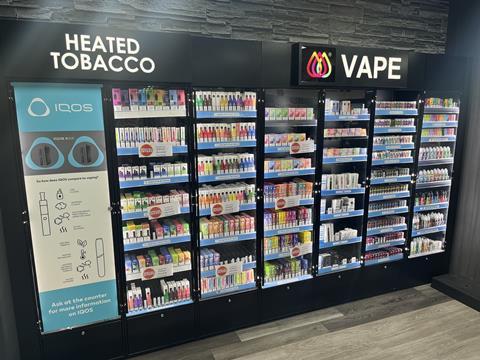
5. How can I capitalise on heated tobacco growth?
A similar area of growth is the heated tobacco segment, a market that was kicked off in the UK by Philip Morris with Iqos but is now rich with plenty of other brands and innovation. Unlike combustible cigarettes, heated products bake the tobacco rather than igniting it, resulting in products that have a reduced risk to health compared to traditional tobacco products.
PML’s John Rennie says: “In the UK, as with many other markets, the growth of heated tobacco has been a sharp contrast to the decline in cigarette sales similarly to Europe.
“Nationally, the percentage of convenience retailers now selling our Terea and Heets tobacco sticks has risen by 42% in two years, while cigarette sales declined by 34% during the same period. This trend is also reflected in grocery multiples, where sales of Iqos kits grew by 269% between September 2021 and December 2023, while cigarette sales declined by 27%.
Looking at where the growth in the heated tobacco category is coming from, it’s flavours that are pushing the market forwards. “Sales of tobacco-flavoured variants account for 50% of all refill sales in traditional retail, with menthol flavours accounting for 40%,” says JTI’s Mark McGuinness.
“The cost-of-living crisis is fuelling the growth in lower-priced nicotine alternatives, and almost 60% of heated tobacco consumers are switching from value and below tobacco lines. The competitively priced Ploom X Advanced bundle offers value for money within the heated tobacco category.”
Retailers are much more optimistic about the future of the heated segment than they are tobacco. As Mannings says: “I believe sales of heated tobacco will only increase.”
There’s evidence these products fill a gap that vaping products struggle to. “In the UK, 73% of adult smokers have tried vaping, but only 23% have stuck with it,”[24] says Rennie. “Recognising that no single smoke-free product can cater to every smoker’s preferences, embracing a multi-category approach becomes indispensable for those investing in their smoke-free portfolio.”

6. How should I prepare for the disposables vaping ban?
Reading the headlines around vaping in recent years, you’d be forgiven for thinking that most consumers never leave home without a vape. In fact, only 5% of the population use e-cigarettes and only 10% have even tried them, rising to 19% of 25-34s.
Nevertheless, the rise in popularity of disposable vapes among children has prompted the government to act. From April 1, 2025, these products will be banned, and retailers will be given a six-month window to sell through existing stock.
Retailers are advised to work closely with their suppliers to ensure that they manage their stock ahead of a hard October deadline.
“We’ve started thinking about the ban and which devices will replace disposables once it’s in place, says Mannings. “We plan to have everything switched out ahead of April and we now only buy when we need them. We might lose sales this way, but we don’t want to get caught out or have leftover stock and we end up losing more money.”
Iqbal, meanwhile, is seeing rechargeable devices coming to the fore. “Customers are buying rechargeable devices, but they’re throwing them away and buying new ones,” he says. “For example, the IVG 4in1s are popular. People get four vapes and then throw it away – and they’re still getting the value.
“I think they’re doing this because pods aren’t that easy to get hold of right now and it’s too much for them. This might change after the ban, but everything is up in the air right now.”
“The demand for pod-based devices is expected to grow significantly as consumers look for compliant products that deliver the same taste and flavour experience as disposables,” confirms Imperial Brands’ Andrew Malm. “Ahead of the anticipated disposable vape ban, flavour and convenience will be critical for vapers who currently use disposable products and looking to switch to alternatives.
“To tap into this trend, we have launched the all-new Blu bar kit – a rechargeable vaping device that uses replaceable pods, to deliver 1,000 puffs of intense flavour per pod.”
Recent sales data shows an increasing demand for high puff count products. “Available in refillable and rechargeable formats, the e-liquid in these products lasts significantly longer in comparison to traditional single-use vapes, making them a less wasteful and more cost-effective alternative,” says Angelo Yang, associate general manager at Elfbar.
“A report by the Royal College of Physicians noted that flavours are integral in encouraging adult smokers to quit cigarettes and adopt vaping, advising that a range of flavours should be available to facilitate quit-smoking attempts. In terms of trends, fruit flavours remain the most popular with adult smokers and ex-smokers, as evidenced by the ASH 2023 adult vaping survey and member-commissioned research by the Independent British Vaping Trade Association.”
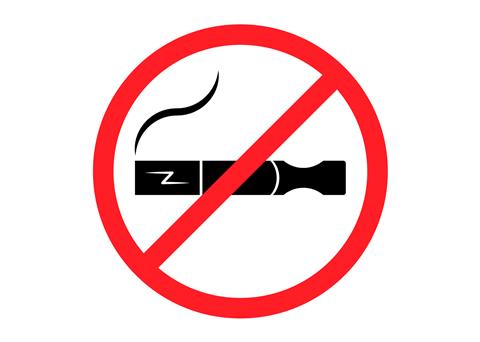
7. Is there more vaping legislation on the horizon?
This ban is unlikely to be the last we’ll see for regulation in the vaping category. According to the UK Vaping Industry Association, The Tobacco and Vapes Bill does not seek to automatically impose any new vape regulations but, if it becomes law, it will give the health secretary powers to bring in additional measures to limit vape flavours, further regulate how products are presented and packaged, and limit how vape products are displayed in store.
“The UKVIA is concerned that the powers contained in the legislation could be hugely damaging to the vape industry if they were used to restrict flavours or align the marketing and display of vapes with that of cigarettes,” says director general John Dunne. “We want the bill amended so that there must be consultation with relevant stakeholders including the vape and retail industries as well as with adult vapers and smokers, before new restrictions can be introduced under the legislation.
The government announced in the 2024 budget that it would introduce a new vaping products duty from October 2026 and that this would be accompanied by a one-off increase in tobacco duties.
“A consultation was held from March to May this year and we are currently awaiting the government’s response to that consultation and details about how the new duty will be applied,” Dunne adds.
Whatever comes next for the nicotine categories, we know there will be plenty of opportunity for responsible retailers to meet the needs of their customers. The way people consume nicotine might be more complicated now than it was in the past, but there are still ways to drive sales and profits with relevant ranges.





















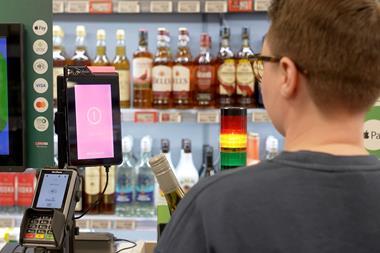

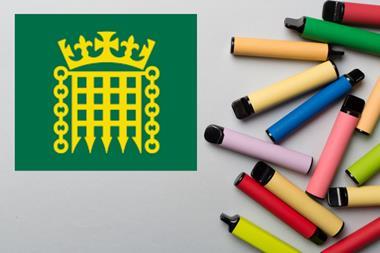

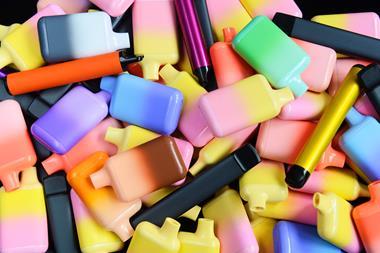







No comments yet